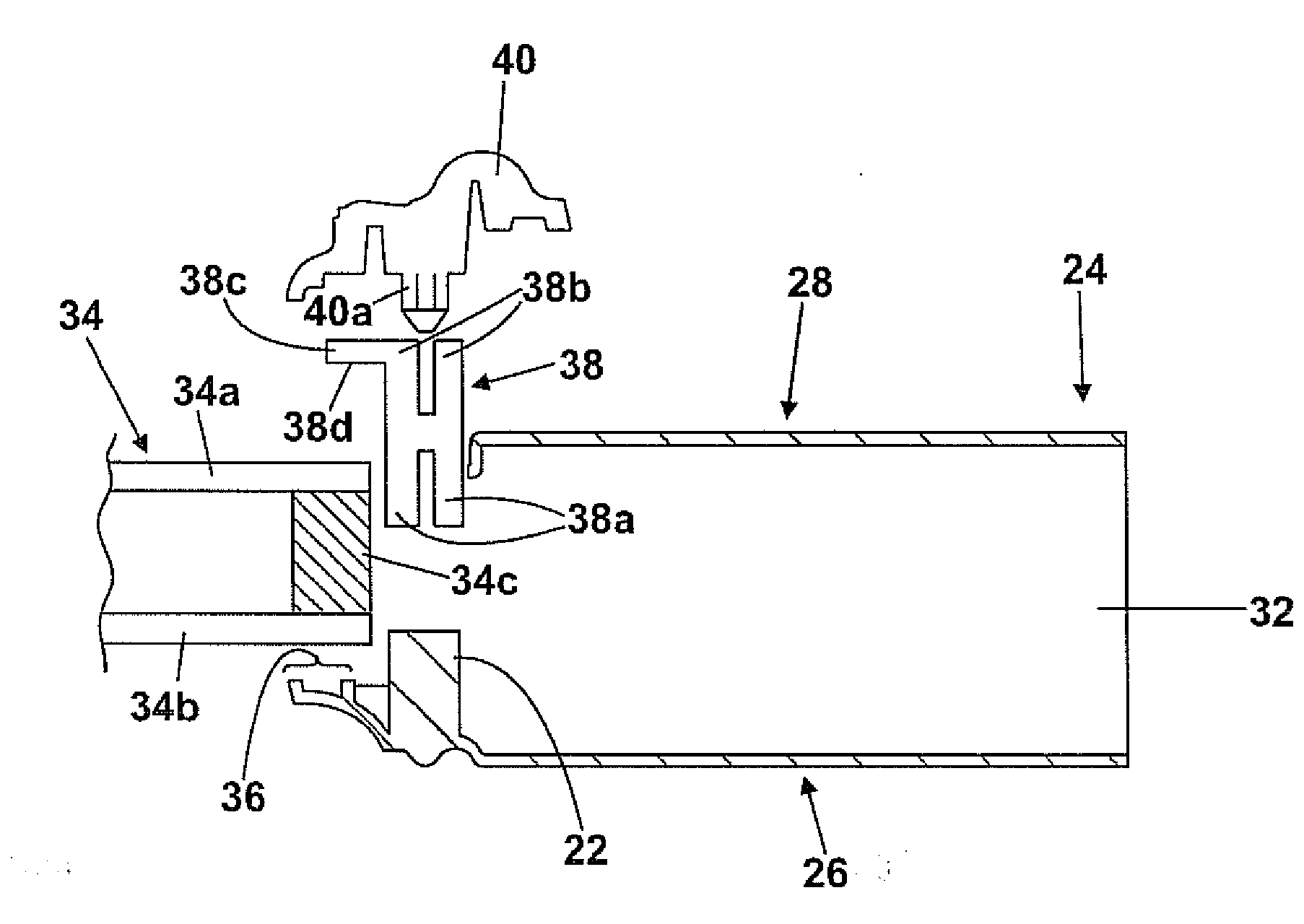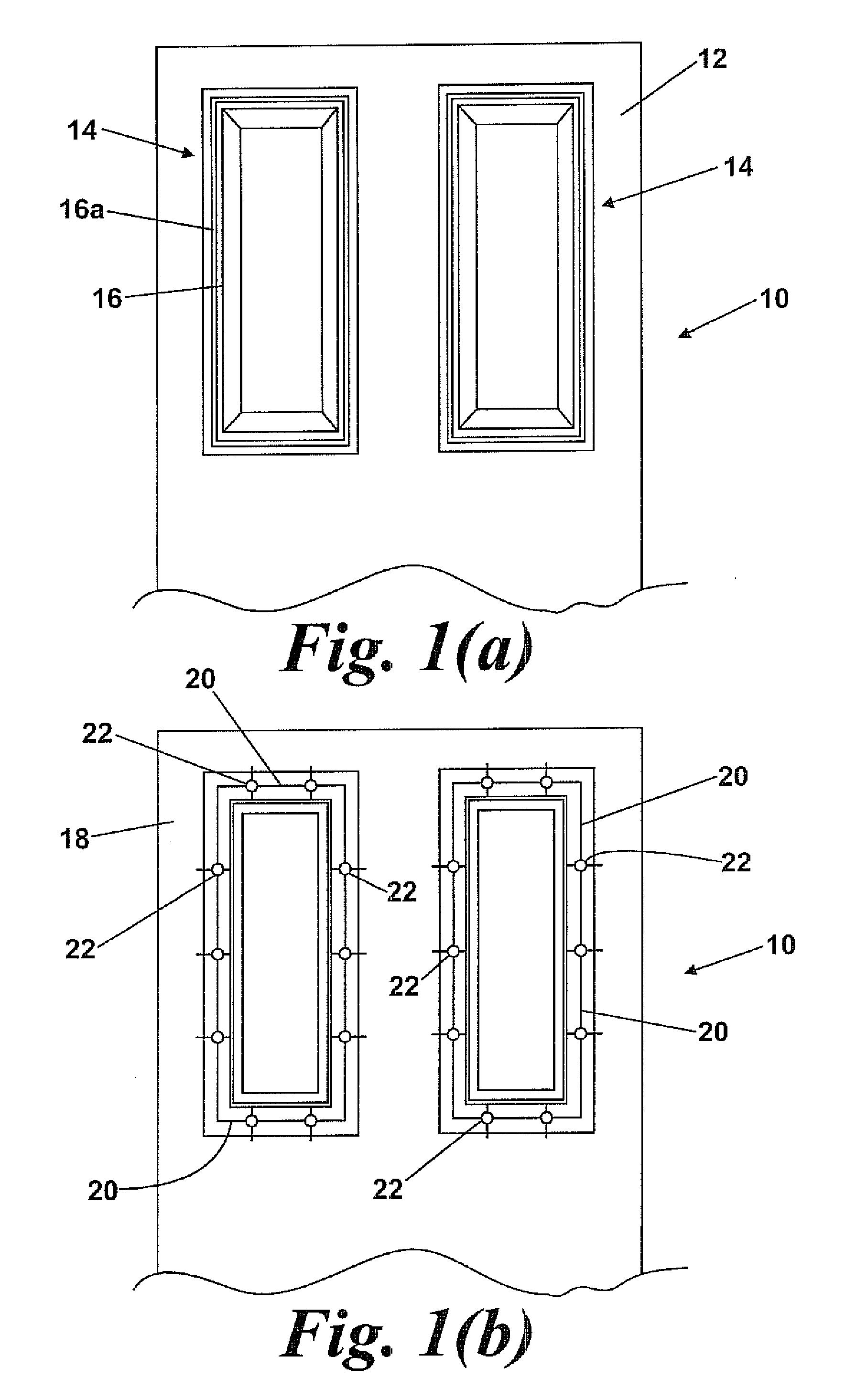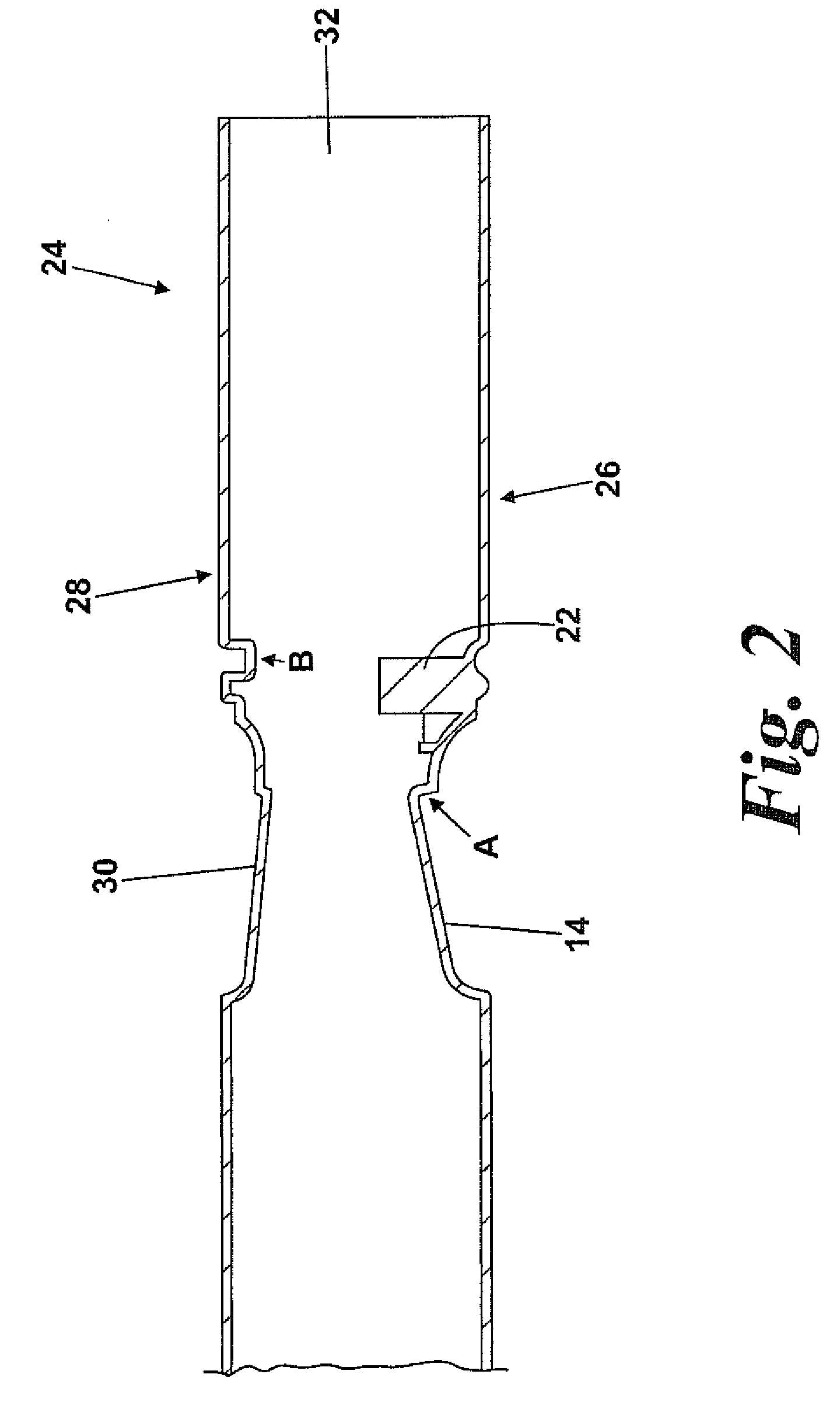Composite doors
a technology of composite doors and doors, applied in the field of composite doors, can solve the problems of time-consuming and difficult procedures, differential weathering patterns, and inconvenient achieve the effects of convenient production of relatively complex shapes, precise shapes and dimensions, and economics
- Summary
- Abstract
- Description
- Claims
- Application Information
AI Technical Summary
Benefits of technology
Problems solved by technology
Method used
Image
Examples
Embodiment Construction
[0049]FIG. 1 shows a door skin 10 having on its exterior surface 12 panels 14 comprising concentric lip portions 16 as is well known in the art. As shown in FIG. 1(b) the interior surface 18 of the door skin 10 comprises a number of ribs 20 having a plurality of bosses 22 formed thereon. The ribs are in registry with the outer lip 16a of the panels 14. FIG. 2 shows a composite door 24 comprising a first door skin 26 which is generally of the type shown in FIG. 1, and shares many common features; identical numerals are used to denote such shared features. The composite door 24 further comprises a second door skin 28 which has panels 30 which are in registry with the panels 14 of the first door skin 26. The door skins 26, 28 are separated by a foam core 32, and are mounted on a door frame (not shown) in the conventional manner.
[0050]The composite door 24 shown in FIG. 2 is unglazed, but offers the facility for a glazing panel to be installed conveniently, quickly, and with an aestheti...
PUM
| Property | Measurement | Unit |
|---|---|---|
| time | aaaaa | aaaaa |
| strength | aaaaa | aaaaa |
| shape | aaaaa | aaaaa |
Abstract
Description
Claims
Application Information
 Login to View More
Login to View More - R&D
- Intellectual Property
- Life Sciences
- Materials
- Tech Scout
- Unparalleled Data Quality
- Higher Quality Content
- 60% Fewer Hallucinations
Browse by: Latest US Patents, China's latest patents, Technical Efficacy Thesaurus, Application Domain, Technology Topic, Popular Technical Reports.
© 2025 PatSnap. All rights reserved.Legal|Privacy policy|Modern Slavery Act Transparency Statement|Sitemap|About US| Contact US: help@patsnap.com



